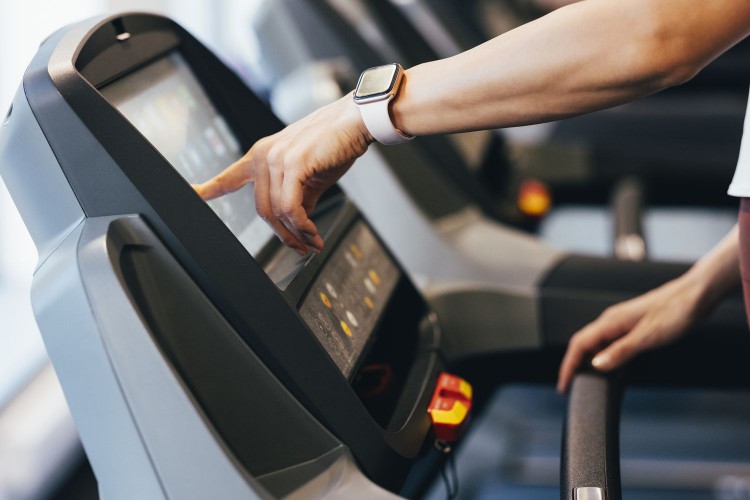- High-intensity interval training (HIIT) is beneficial for improving cardiovascular health, reducing abdominal fat, and maintaining muscle mass, but it's possible to overdo it.
- Doing HIIT workouts more than two to three days a week, without proper rest time between workouts, can lead to fatigue and potential injury.
- The best workout programs are well-rounded and include strength training, active recovery, and cardiovascular exercise (which can include HIIT workouts).
It’s no secret that exercise is good for you—living an active lifestyle can help lower blood pressure, improve mental health and cognition, and reduce the risk of chronic disease, including heart disease and cancer.
The Centers for Disease Control and Prevention (CDC) recommends all adults get at least 150 minutes of moderate-intensity aerobic activity each week, 75 minutes of vigorous-intensity activity, or a combination of both, along with at least two days of strength training.
For a more vigorous workout, some people may choose a form of exercise known as high-intensity interval training (HIIT), or workouts characterized by short bursts of intense exercise (think: sprints or burpees), followed by periods of periods of recovery.
HIIT comes with a number of benefits, from improving cardiovascular health to reducing abdominal fat and maintaining muscle mass—but it is possible to overdo it on this type of exercise. Here’s what to know about incorporating HIIT training into your workout routine, and how many weekly sessions you should do before taking a rest day.

Sergio Marcos/Stocksy
Benefits of HIIT
Though intense (as the name suggests), HIIT workouts can provide numerous benefits for a wide range of people. Because of their high intensity, they can be performed in a shorter period of time, which makes them ideal for people in a rush.
HIIT workouts have been shown to improve cardiovascular health, metabolic health, and cognitive function, and reduce all-cause mortality. They’re also highly adaptable—they can be done with any modality of exercise (cycling, running, swimming) and at any experience level.
“HIIT workouts can be fun and challenge you mentally, showing that you can do hard things,” Emily Nichols, CPT, told Health. “They are great for raising your heart rate and metabolism for a longer period of time after your workout, which results in more calories being burned.”
What Nichols is talking about is a period after exercise called excess post-exercise oxygen consumption (EPOC), which happens after intense exercise. During that time—about a two-hour window after activity—the body works to get back to its pre-exercise state and burns more calories in the process.
How Often Should You Work Out?
Is It Safe to Do HIIT Workouts Every Day?
Because they’re high-intensity, HIIT workouts aren’t meant to be done every day.
“Your body cannot sustain that high intensity, physically and mentally, day after day,” said Nichols.
Ideally, Nichols said you should rest for at least 24 hours between HIIT sessions. Without that recovery, she added, you can experience excessive fatigue, prolonged soreness, fitness plateaus, and hormonal imbalances that could lead to burnout and frustration with your exercise routine—ultimately leaving it ineffective.
“I recommend to my clients doing two to three days a week of 20 to 30-minute HIIT sessions, with 24 to 48-hour rest periods in between,” said Nichols. “I’m a big fan of mixing in HIIT workouts with active recovery days, such as walking or yoga, with the rest of your week focused on strength training.”
Downsides of Too Much HIIT
If you overextend yourself on HIIT workouts, you can wind up overly tired and even injured. “Overdoing HIIT workouts can lead to fatigue and inefficient workouts or even injury if you aren’t taking proper recovery periods,” said Nichols.
In order to reap the benefits of exercise, you must be able to do it consistently—but that doesn’t mean never taking breaks, quite the opposite, actually. To keep up with an exercise routine, you need proper recovery time, said Nichols; if you don’t take much-needed breaks, you risk becoming injured and having to take even more time off from exercise.
The cortisol released during HIIT workouts can also have some unwanted effects on the body.
“During HIIT workouts there are many hormones that are released and cortisol is one of them,” Norma Orellana, NP, a cardiology nurse at UCLA Health, told Health. “Cortisol activates your sympathetic nervous system, also known as your fight or flight response, which in turn leads to metabolic improvements.”
“The problem becomes where there is too much cortisol in the body, which is why rest and recovery between workouts is so important,” added Orellana.
Having excess cortisol in the body can lead to a number of symptoms, including fatigue, mood changes, sleep disturbances, and anxiety, and can even affect the immune system and increase the risk of illness, said Orellana.
Also worth noting: Only doing HIIT workouts can lead to boredom.
“Variety is good for the body when it comes to fitness,” said Nichols. “Leading with strength training (especially for women), active recovery, and then HIIT workouts will create a well-rounded routine that will yield results if you are consistent.”
The 20-Minute HIIT Workout You Can Do Literally Anywhere
Should You Try HIIT?
HIIT can be scaleable for most populations, but just like any other time you start a new fitness regimen, you should consult a doctor.
People who have a history of, or who currently have cardiac conditions should avoid HIIT workouts until they’ve been cleared by their cardiologist to participate. “This is due to the demand these types of workouts have on the heart,” said Orellana.
But once you’re cleared by a healthcare professional, you’re good to go. “Ensure a proper warm-up before starting a HIIT workout, and if you’re brand new then work with a certified personal trainer to keep proper form to avoid injury,” said Nichols.
Overall, the benefits of HIIT are considerable, but it is important not to overdo it so that you can continue to reap them. Injury, fatigue, burnout, and hormonal imbalances are just a few of the risks that can occur from overtraining, so keep your HIIT schedule to just a few times per week to maximize your results.








